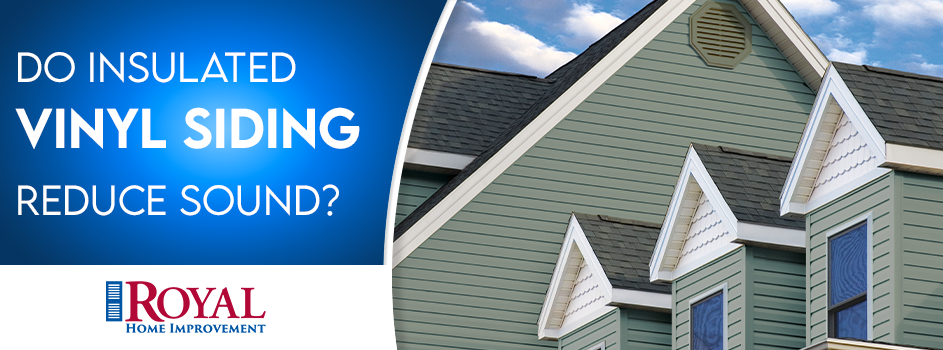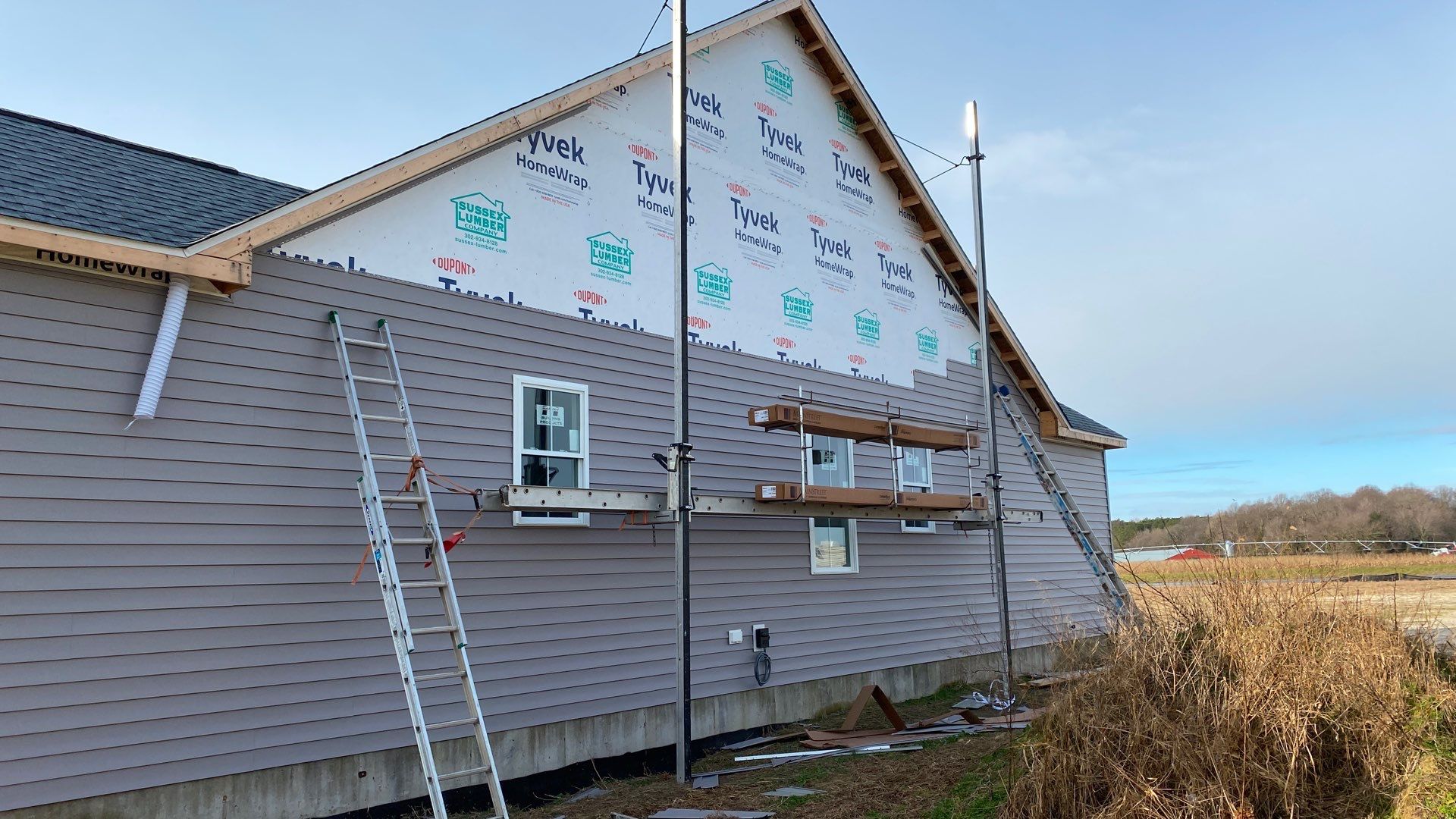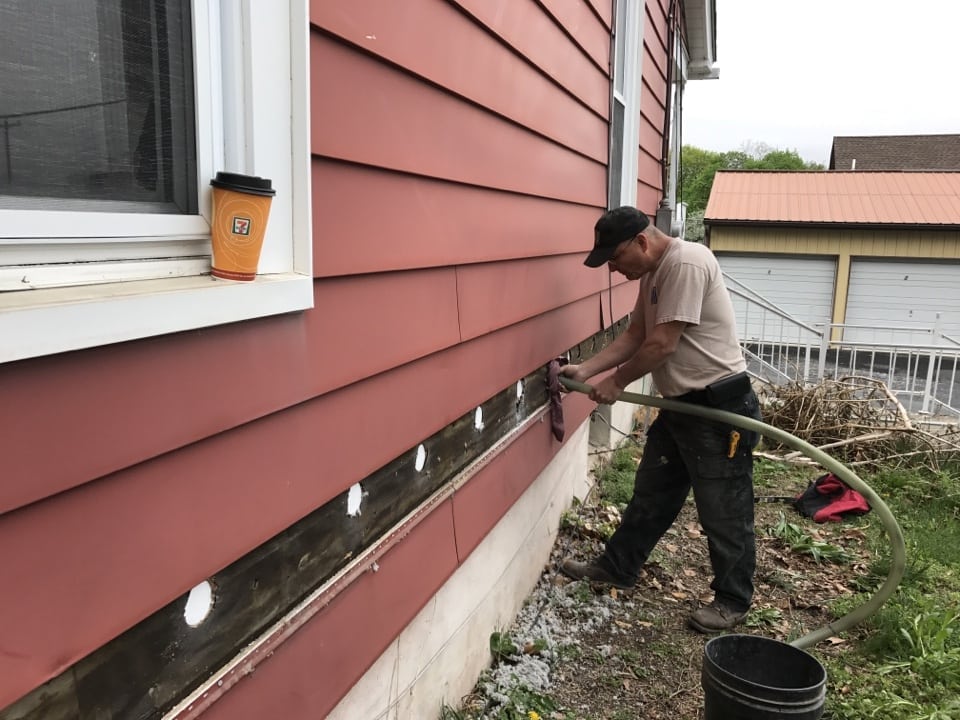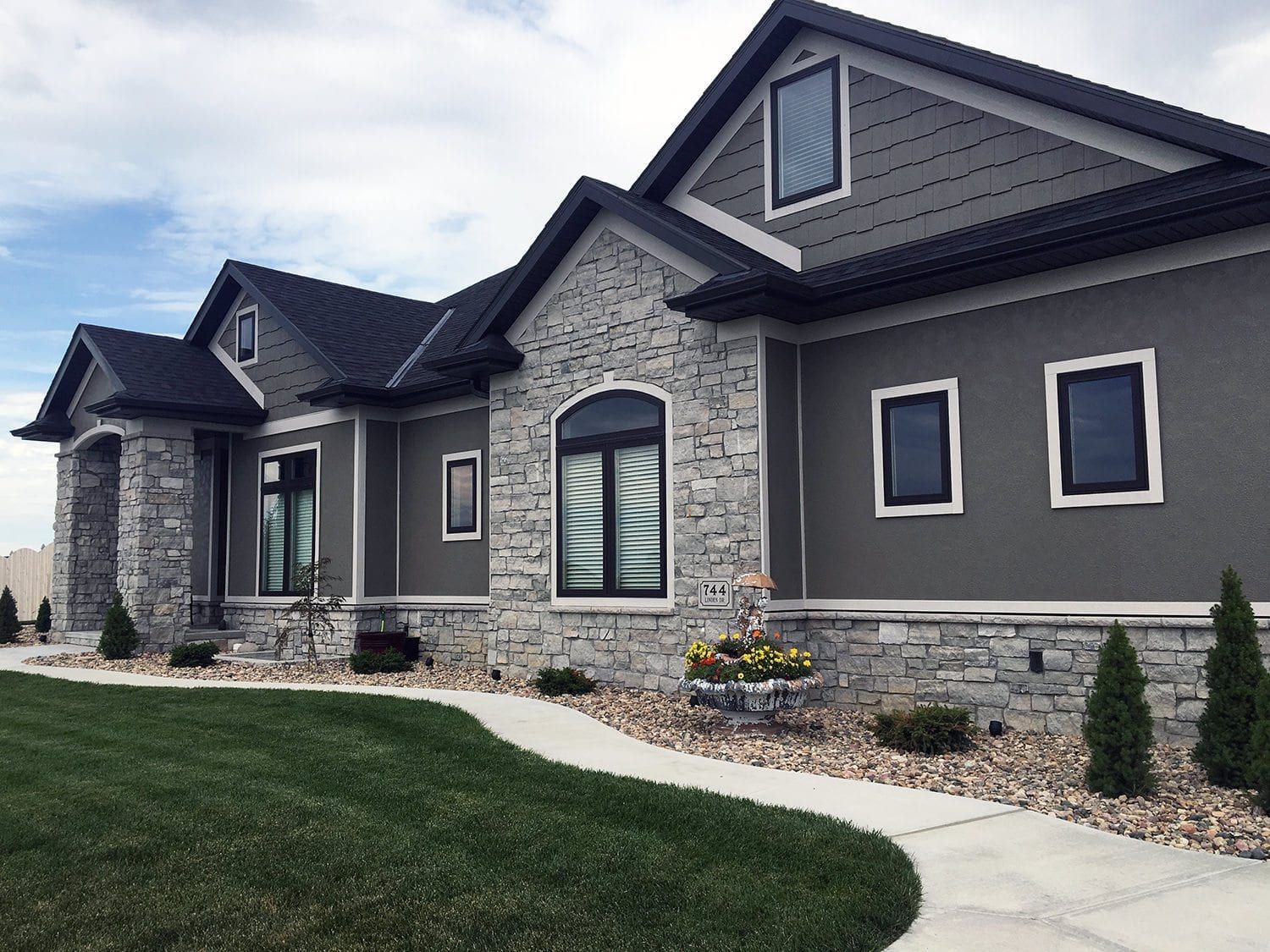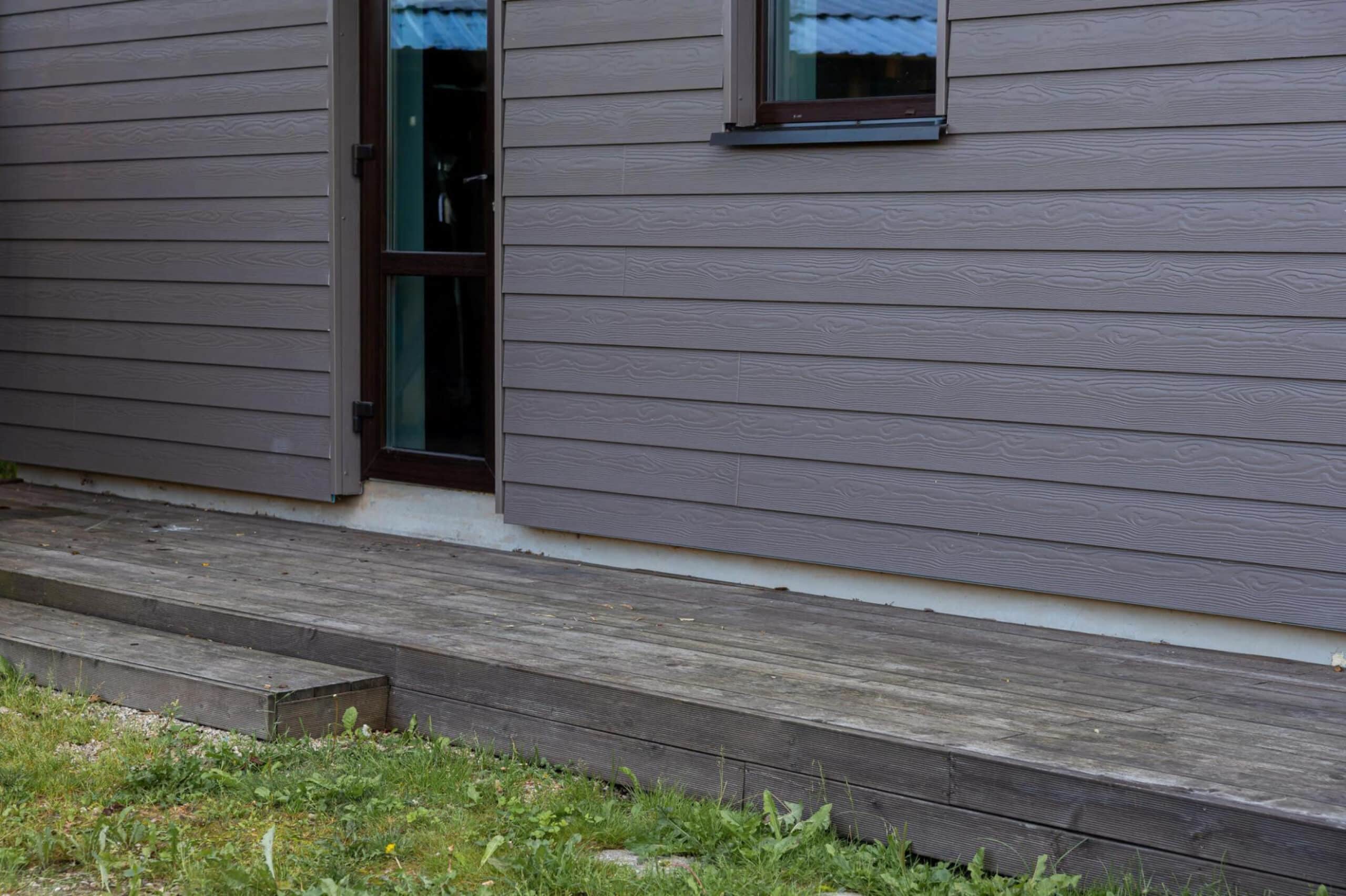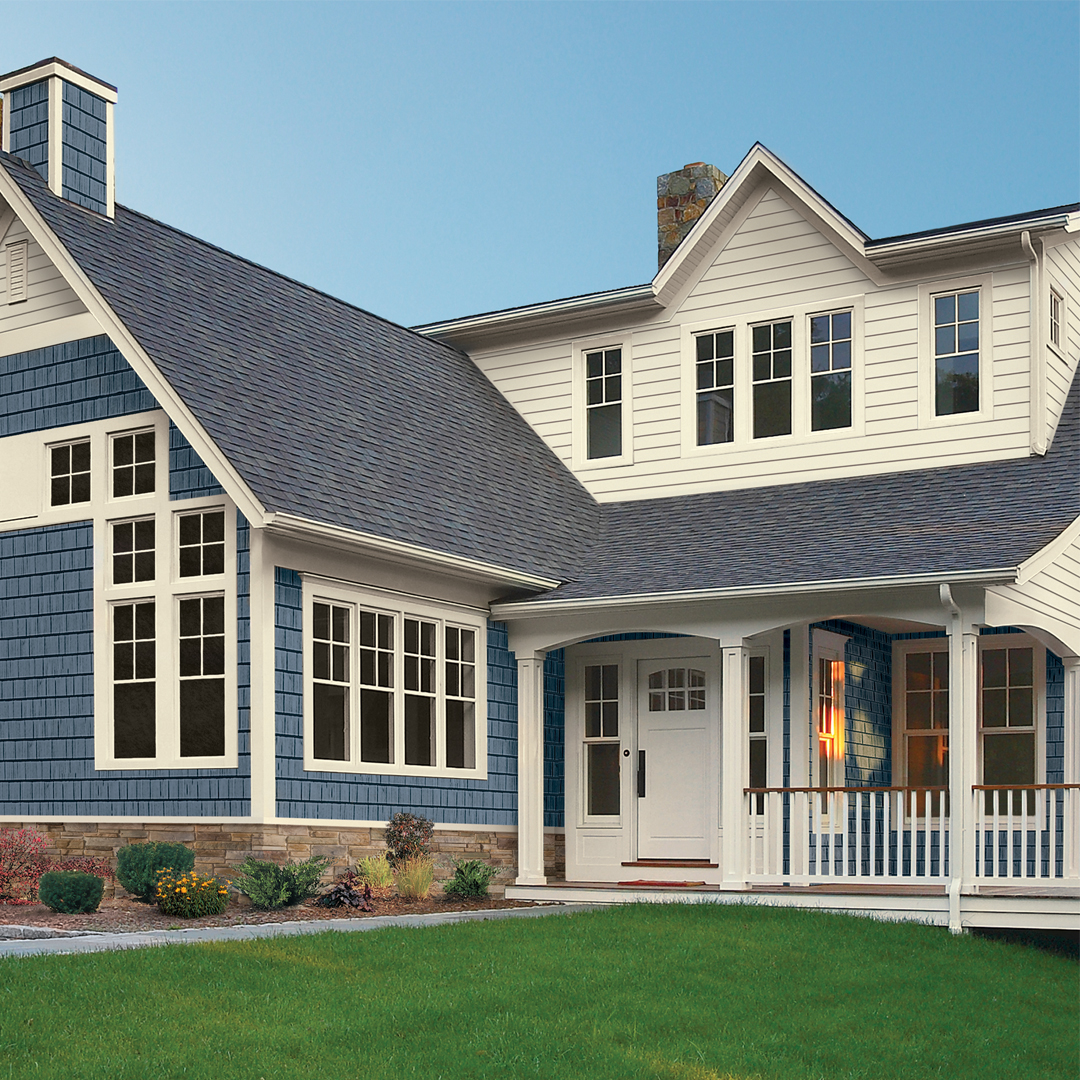How to Install Insulated Siding
How to install insulated siding? This seemingly straightforward question opens a door to a world of considerations, from choosing the right material—vinyl, fiber cement, or foam—to mastering the intricacies of installation. Understanding the advantages and disadvantages of each siding type, coupled with meticulous preparation and attention to detail, is key to a successful and long-lasting project. This guide will walk you through every step, from initial planning and surface preparation to the finishing touches and essential maintenance practices.
We’ll cover everything from choosing the right tools and materials to tackling common installation challenges like uneven walls and tricky corners. We’ll also delve into crucial safety precautions and provide tips for ensuring your insulated siding remains beautiful and functional for years to come. Whether you’re a seasoned DIY enthusiast or a homeowner tackling your first home improvement project, this comprehensive guide will empower you to successfully install insulated siding.
Introduction to Insulated Siding
Insulated siding is an exterior cladding system that combines a weather barrier with insulation in a single unit, offering improved energy efficiency and enhanced protection for your home. Its benefits extend beyond mere aesthetics, contributing significantly to reduced energy costs and a more comfortable living environment.
Insulated siding offers several advantages over traditional siding installations. By integrating insulation, it reduces heat transfer through the exterior walls, minimizing energy loss during both summer and winter months. This translates to lower heating and cooling bills, a significant benefit for homeowners concerned about energy consumption and costs. Additionally, it can contribute to a quieter home by providing a layer of sound insulation.
Types of Insulated Siding Materials
Several materials are used in the manufacture of insulated siding, each with its own set of advantages and disadvantages. The choice of material often depends on factors such as budget, aesthetic preferences, and the specific climate of the location.
Vinyl Insulated Siding
Vinyl insulated siding is a popular choice due to its affordability and ease of installation. It is available in a wide range of colors and styles, offering considerable design flexibility. However, vinyl can be susceptible to damage from impact and extreme temperatures, and its lifespan may be shorter compared to other materials. Furthermore, its aesthetic appeal might be considered less sophisticated than other options by some homeowners.
Fiber Cement Insulated Siding
Fiber cement insulated siding combines the durability of cement with the insulating properties of foam backing. This combination results in a robust and long-lasting siding option that is highly resistant to fire, insects, and rot. While more expensive than vinyl, fiber cement offers superior performance in terms of longevity and weather resistance. However, it is heavier than vinyl and requires more expertise for installation. Its color is typically limited to factory-applied options, unlike vinyl.
Foam Insulated Siding
Foam insulated siding, often polyurethane or polyisocyanurate, provides excellent thermal insulation. This type of siding is lightweight and easy to install, making it a suitable option for DIY projects. However, foam siding is less durable than vinyl or fiber cement and can be susceptible to damage from impact and UV exposure. It may also be more prone to moisture issues if not properly installed and sealed. Its aesthetic versatility is also more limited than vinyl or fiber cement.
Preparation Before Installation
Proper preparation is crucial for a successful insulated siding installation. A well-prepared surface ensures a long-lasting, aesthetically pleasing, and energy-efficient result. Neglecting this step can lead to problems ranging from uneven siding to premature failure of the installation. Taking the time to thoroughly prepare the exterior walls will save time and frustration in the long run.
Thorough preparation involves a systematic approach, encompassing cleaning, repair, and ensuring the structural integrity of the underlying wall. This process not only enhances the final appearance but also guarantees the longevity and effectiveness of the insulated siding.
Exterior Wall Preparation Checklist
This checklist outlines the essential steps for preparing your exterior walls before installing insulated siding. Following these steps ensures a smooth and successful installation process.
- Inspect the existing wall cladding: Carefully examine the entire surface for any damage, such as cracks, holes, loose or rotting wood, or areas of deterioration. Document all findings for efficient repair planning.
- Remove old siding or cladding: If replacing existing siding, carefully remove it, ensuring that you dispose of it properly according to local regulations. Take care to avoid damaging the underlying sheathing.
- Clean the wall surface: Thoroughly clean the wall surface using a pressure washer or stiff brush to remove dirt, debris, loose paint, cobwebs, and any other contaminants. Allow the surface to dry completely before proceeding.
- Repair damaged areas: Address any identified damage, such as filling cracks with caulk or patching holes with appropriate materials. Ensure all repairs are structurally sound and properly sealed to prevent moisture intrusion.
- Prime the repaired areas: After repairs have dried, apply a primer to the repaired areas to ensure proper adhesion of the new siding. This step improves the overall durability and longevity of the installation.
- Check for moisture: Use a moisture meter to check for any hidden moisture within the wall. Excessive moisture can lead to mold growth and siding failure. Address any moisture issues before proceeding with installation.
- Install flashing and weather barriers: Install appropriate flashing around windows, doors, and other openings to prevent water penetration. Ensure a continuous weather barrier is in place to protect the wall from moisture.
Necessary Tools and Materials
Gathering the necessary tools and materials beforehand streamlines the installation process and prevents costly delays. This table lists essential items, though specific requirements may vary based on project size and complexity.
| Tools | Materials | Tools | Materials |
|---|---|---|---|
| Measuring tape | Insulated siding panels | Level | Caulk |
| Circular saw | Wood sheathing (if needed) | Jigsaw | Fasteners (nails or screws) |
| Hammer or drill | Primer | Utility knife | Flashing |
| Safety glasses | Wood filler | Work gloves | Weather barrier |
Importance of Proper Surface Preparation
Proper surface preparation is paramount for a successful insulated siding installation. It directly impacts the longevity, aesthetic appeal, and energy efficiency of the project. Neglecting this crucial step can lead to various problems.
Cleaning removes dirt and debris that can interfere with the adhesion of the siding, potentially causing it to loosen or fall off over time. Repairing damaged areas prevents further deterioration and ensures a structurally sound installation. Addressing moisture issues prevents mold growth and wood rot, which can lead to costly repairs down the line. A well-prepared surface provides a stable and even base for the siding, resulting in a professional and long-lasting finish.
Installation Process
Installing insulated siding is a multi-step process requiring careful measurement, precise cutting, and secure fastening. Proper installation ensures a long-lasting, energy-efficient exterior for your home. This guide provides a detailed walkthrough of the process, emphasizing best practices for achieving optimal results.
Panel Installation
Begin by installing the first panel at a corner or a designated starting point, ensuring it is level and plumb. Use self-tapping screws, spaced according to the manufacturer’s instructions, to secure the panel to the sheathing. A properly fastened panel will show screws evenly spaced and flush with the siding surface, minimizing gaps and ensuring a neat appearance. Imagine an image: A close-up shows a siding panel firmly attached to the wall, with screws evenly spaced and slightly countersunk. The panel sits flush against adjacent panels, creating a seamless, unbroken line. Overlapping panels should be secured using the same method. Continue installing panels horizontally, ensuring proper overlap and alignment. Each panel should be snug against the previous one, preventing air infiltration and maintaining a consistent look. Remember to use a level to check the vertical and horizontal alignment of each panel throughout the installation process.
Measuring and Cutting Siding Panels
Accurately measuring and cutting siding panels is crucial for a professional finish. Use a measuring tape to determine the precise dimensions needed for each section. Mark the cutting line clearly on the panel with a pencil. A sharp utility knife or a circular saw with a fine-tooth blade is recommended for clean cuts. For intricate cuts around windows or corners, a jigsaw may be more suitable. Imagine an image: A worker carefully measures a siding panel with a tape measure, then uses a utility knife to make a precise cut along a marked line. The cut edge is clean and straight, ready for installation. Remember to always wear appropriate safety gear, such as gloves and eye protection, when using cutting tools.
Flashing and Trim Installation
Proper flashing and trim installation is vital for preventing water damage. Before installing siding around windows and doors, install flashing to direct water away from the openings. Flashing should be installed under the siding, overlapping the window or door frame and extending several inches beyond. Use caulk to seal any gaps between the flashing and the siding. Trim pieces should be installed after the siding, covering the edges and providing a neat, finished look. Trim pieces should be cut to fit precisely and secured with appropriate fasteners. Imagine an image: A detailed view shows flashing neatly installed under a window’s siding, completely covering the area between the window frame and the siding. Caulk is visible, sealing the gap and creating a watertight seal. The trim piece is perfectly fitted and securely fastened, covering the exposed edges of the flashing and siding. This creates a clean, professional appearance.
Dealing with Specific Installation Challenges
Insulated siding installation, while straightforward in principle, often presents unique challenges depending on the existing wall structure and site conditions. Uneven walls, complex corner configurations, and pre-existing obstacles can significantly impact the installation process and the final aesthetic appeal. Addressing these challenges effectively requires careful planning, the right tools, and a thorough understanding of various installation techniques.
Successfully navigating these difficulties is crucial for ensuring a long-lasting, aesthetically pleasing, and energy-efficient exterior. Improper handling of these challenges can lead to gaps, poor insulation performance, and ultimately, a compromised installation requiring costly repairs.
Uneven Wall Surfaces
Uneven wall surfaces are a common problem. Significant variations in wall plane can create difficulties in achieving a smooth, even siding installation. Simple variations can often be addressed by using shims to create a consistent plane before applying the siding. For more substantial unevenness, a more involved approach may be necessary, such as furring strips, which create a new, even surface for the siding to be attached to. This involves attaching evenly spaced, thin wooden strips to the existing wall, creating a uniform base. The choice between shims and furring strips depends on the severity of the unevenness; shims are suitable for minor imperfections, while furring strips are necessary for significant irregularities. Accurate measurements and careful planning are essential to ensure the new surface is both level and plumb.
Complex Corner Installations
Exterior corners present unique challenges due to the need for precise fitting and weather-tight seals. The most common method involves using special corner trim pieces designed to seamlessly integrate with the insulated siding panels. These pieces are specifically manufactured to create a clean, professional finish, and provide a strong, weatherproof seal. Alternatively, some installers may opt to miter the siding panels themselves to fit the corner, although this method requires greater skill and precision to ensure a watertight seal. Mitering, while potentially offering a more seamless look, is more time-consuming and prone to errors if not executed perfectly. Therefore, using pre-fabricated corner trims is generally preferred for ease of installation and reliability.
Dealing with Obstacles and Existing Features
Pre-existing features such as windows, doors, and vents require careful planning and precise cuts to ensure a proper fit and a visually appealing finish. Accurate measurements are crucial to avoid errors. J-channel is often used to create a neat transition between the siding and these features. This allows for a clean, professional finish while accommodating the variation in wall planes around these elements. Precise cutting of the siding panels around obstacles is vital to avoid gaps and ensure a weather-tight seal. Proper flashing around windows and doors is essential to prevent water penetration. This involves installing a waterproof barrier to redirect water away from the building’s structure. Failing to address these details can lead to water damage and costly repairs.
Finishing Touches and Maintenance
Completing the insulated siding installation involves more than just attaching the panels. Several finishing touches are crucial for ensuring a professional-looking, long-lasting, and weather-resistant exterior. Proper maintenance practices are equally important for maximizing the lifespan and performance of your new siding.
Properly finishing and maintaining your insulated siding will protect your investment and enhance your home’s curb appeal. Neglecting these steps can lead to premature deterioration, compromising the insulation value and requiring costly repairs down the line. The following sections outline the key finishing touches and maintenance procedures.
Caulking and Sealants
Applying caulking and sealants is vital to prevent water penetration. This step seals gaps around windows, doors, and other penetrations in the siding, creating a watertight barrier. Different types of caulking are suitable for various applications; for example, a high-quality silicone-based caulk is often preferred for its durability and weather resistance around windows and doors, while a polyurethane-based caulk might be better suited for expansion joints. Always follow the manufacturer’s instructions for application and curing time. Inspect the caulking regularly and reapply as needed, particularly in areas prone to cracking or weathering.
Painting and Finishing
Many insulated siding systems require painting or staining for protection and aesthetic appeal. Choose exterior-grade paints or stains designed for the specific siding material. Proper surface preparation, including cleaning and priming, is crucial for optimal paint adhesion and longevity. Multiple coats may be necessary to achieve a uniform and durable finish. Consult the siding manufacturer’s recommendations for suitable paint types and application techniques. A properly applied finish significantly extends the life of the siding and enhances its aesthetic appeal.
Maintenance Procedures for Different Siding Types
Different types of insulated siding require slightly different maintenance approaches. For example, vinyl siding generally requires only occasional cleaning with soap and water to remove dirt and debris. Fiber cement siding, while more durable, may require periodic painting or staining to maintain its appearance and protect it from the elements. Metal siding is relatively low-maintenance but may require occasional cleaning to remove rust or corrosion. Always consult the manufacturer’s instructions for specific cleaning and maintenance recommendations for your chosen siding type.
Tips for Long-Term Durability and Performance
- Regularly inspect your siding for any signs of damage, such as cracks, loose panels, or water damage. Address any issues promptly to prevent further problems.
- Clean your siding at least once or twice a year, using a gentle cleaning solution and a soft brush or sponge. Avoid harsh chemicals that could damage the siding’s finish.
- Trim overhanging branches that could scratch or damage the siding during storms.
- Ensure proper ventilation around the house to prevent moisture buildup, which can lead to mold and mildew growth.
- Protect your siding from impact damage by using caution when working near the house or storing items against the exterior walls.
Safety Precautions
Insulated siding installation, while rewarding, presents inherent risks if safety protocols aren’t strictly followed. Adhering to these precautions minimizes the likelihood of accidents and ensures a safe working environment. Proper planning and execution are paramount to a successful and injury-free project.
Safe practices are crucial throughout the entire installation process, from initial preparation to final cleanup. Failing to prioritize safety can lead to serious injuries, property damage, and project delays. This section outlines key safety measures to protect yourself and others.
Personal Protective Equipment (PPE) Usage
Appropriate Personal Protective Equipment (PPE) is non-negotiable for any siding installation project. This equipment acts as a critical barrier against potential hazards. The right PPE dramatically reduces the risk of injuries from falling objects, sharp tools, and exposure to harmful materials.
- Safety glasses or goggles should always be worn to protect eyes from flying debris and dust.
- Work gloves provide hand protection from cuts, abrasions, and chemical irritants present in some siding materials or adhesives.
- A dust mask or respirator is essential to prevent inhalation of harmful particles generated during cutting and sanding operations. The type of respirator will depend on the specific materials used.
- Hearing protection, such as earplugs or earmuffs, is necessary to mitigate the noise produced by power tools.
- Hard hats offer protection from falling objects, particularly crucial when working at heights.
- Safety boots with steel toes provide protection from dropped objects and potential crushing hazards.
Safe Handling and Disposal of Materials
Insulated siding materials and related products can pose various safety risks if not handled and disposed of correctly. Improper handling can lead to injuries, while improper disposal can harm the environment. Following established guidelines is paramount for both safety and environmental responsibility.
- Always follow the manufacturer’s instructions for handling and storage of siding panels, adhesives, and other materials. This often includes guidelines on temperature sensitivity and potential hazards.
- Use appropriate lifting techniques to avoid back injuries when handling heavy siding panels. Consider using lifting aids or asking for assistance if needed.
- Store materials securely and out of reach of children and pets. Keep flammable materials away from ignition sources.
- Dispose of waste materials responsibly, following local regulations and recycling guidelines. Sharp pieces of siding should be disposed of in puncture-resistant containers.
- Adhesives and other chemical products should be handled and disposed of according to the manufacturer’s instructions and local environmental regulations. Never mix different chemicals together unless specifically instructed to do so.
End of Discussion
Successfully installing insulated siding involves a blend of careful planning, precise execution, and a commitment to safety. From the initial selection of materials and preparation of the exterior walls to the final caulking and maintenance, each step plays a vital role in achieving a beautiful and durable result. By following the detailed instructions and safety guidelines provided in this guide, you can confidently transform the exterior of your home, enhancing its curb appeal and energy efficiency for years to come. Remember to always prioritize safety and consult with professionals if you encounter any significant challenges.
